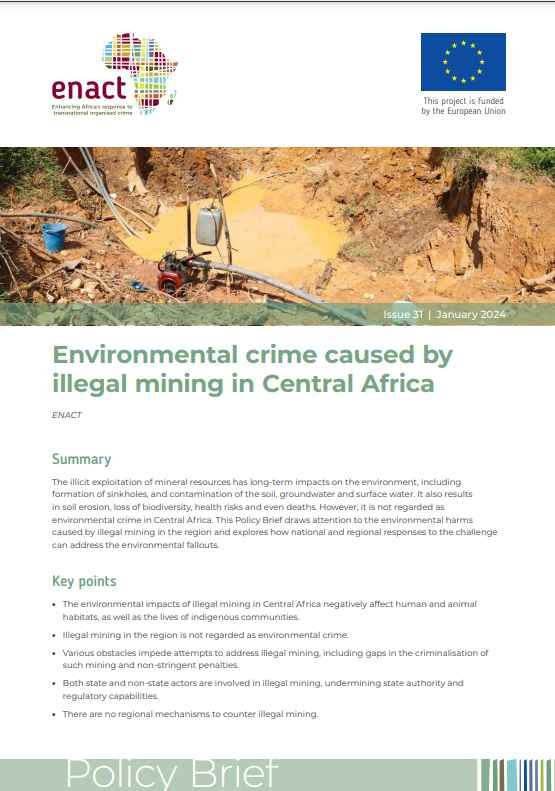By ENACT
The illicit exploitation of mineral resources has long-term impacts on the environment, including formation of sinkholes, and contamination of the soil, groundwater and surface water. It also results in soil erosion, loss of biodiversity, health risks and even deaths. However, it is not regarded as environmental crime in Central Africa. This Policy Brief draws attention to the environmental harms caused by illegal mining in the region and explores how national and regional responses to the challenge can address the environmental fallouts.
Key points
The environmental impacts of illegal mining in Central Africa negatively affect human and animal habitats, as well as the lives of indigenous communities.
Illegal mining in the region is not regarded as an environmental crime.
Various obstacles impede attempts to address illegal mining, including gaps in the criminalization of such mining and non-stringent penalties.
Both state and non-state actors are involved in illegal mining, undermining state authority and regulatory capabilities.
There are no regional mechanisms to counter illegal mining.
ENACT Africa, 2024. 12p.






